
disposable sanitary pads
However, since menstrual pads are designed to absorb menstrual flow, they are not as effective in absorbing urinary leaks; incontinence pads are designed for this purpose. Cloth menstrual pads made a comeback around the 1970s,[4] with their popularity increasing in the late 1980s and early 1990s. Did you know, one person will use an average of12,000 sanitary productsthroughout their lifetime? Expand the folded sanitary pad; from right to left and then the other part from left to right. This wrapper may be used to wrap the soiled pads before disposing of them in appropriate receptacles. disposal sanitary tampons These chemicals can irritate your skin and unbalance your PH. Some variations introduced were quilting of the lining, adding "wings" and reducing the thickness of the pad by utilising products such as sphagnum and polyacrylate superabsorbent gels derived from petroleum. There was an error retrieving your Wish Lists. 20l disposal touchless prullenbak huishoudelijke maandverband beschikking Scented sanitary pads with odour neutralizers and other artificial fragrances contain a combination of unknown chemicals, which can enter the bloodstream and cause side effects. Like a number of other products that first came to market in the 1920s, Kotex sanitary pads originated as a wartime invention. disposal sanitary bags napkin care health personal pack feminine  In general, the layering is as follows: "an absorbent core material placed between a flexible liquid-pervious topsheet and a liquid-impervious plastic backsheet that has an adhesive on the outside for attaching the napkin to an undergarment". For women who could afford such things and had access to them, there were options such as the Hoosier sanitary belt, which held cloth pads in place, or Listers Towels, possibly the first-ever disposable option, but the use of such products was not widespread, Mandziuk says. It really puts into perspective just how polluting disposable pads are, doesnt it? In addition, fragrance and antibacterial agents can be included. Long pads are offered for extra protection or for larger women whose undergarments might not be completely protected by regular length pads, and also for overnight use. If you've never used tampons before, don't worry, you can still switch to cups. Reusable cloth pads do not contain harmful chemicals, as they don't require bleaching or fragrances. Kat Eschner is a freelance science and culture journalist based in Toronto.
In general, the layering is as follows: "an absorbent core material placed between a flexible liquid-pervious topsheet and a liquid-impervious plastic backsheet that has an adhesive on the outside for attaching the napkin to an undergarment". For women who could afford such things and had access to them, there were options such as the Hoosier sanitary belt, which held cloth pads in place, or Listers Towels, possibly the first-ever disposable option, but the use of such products was not widespread, Mandziuk says. It really puts into perspective just how polluting disposable pads are, doesnt it? In addition, fragrance and antibacterial agents can be included. Long pads are offered for extra protection or for larger women whose undergarments might not be completely protected by regular length pads, and also for overnight use. If you've never used tampons before, don't worry, you can still switch to cups. Reusable cloth pads do not contain harmful chemicals, as they don't require bleaching or fragrances. Kat Eschner is a freelance science and culture journalist based in Toronto. 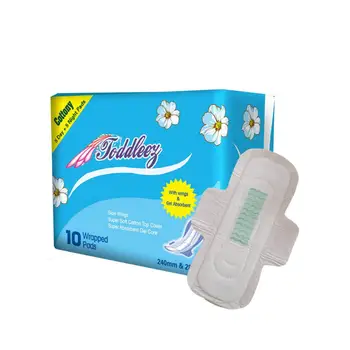 Our reusable pads (and panty liners) have been designed for comfort and performance so you can have a worry-free period and the confidence to carry on with your everyday!
Our reusable pads (and panty liners) have been designed for comfort and performance so you can have a worry-free period and the confidence to carry on with your everyday!  [32] The pads are oxo-biodegradable, which means they break down into "tiny pieces in the presence of oxygen and may then slowly biodegrade". It also analyses reviews to verify trustworthiness. Reasons women choose to switch to cloth menstrual pads include comfort, savings over time, environmental impact and health reasons. Kimberly-Clark, an American paper products company formed in the 1870s, produced bandages from a material called Cellucotton for World War I. Cellucotton, which was made of wood pulp,, was five times as absorbent as cotton bandages but much less expensive. Our reusable products contain no nasty substances and no single use plastic. Whereas a reusable pad needs a bit more TLC.
[32] The pads are oxo-biodegradable, which means they break down into "tiny pieces in the presence of oxygen and may then slowly biodegrade". It also analyses reviews to verify trustworthiness. Reasons women choose to switch to cloth menstrual pads include comfort, savings over time, environmental impact and health reasons. Kimberly-Clark, an American paper products company formed in the 1870s, produced bandages from a material called Cellucotton for World War I. Cellucotton, which was made of wood pulp,, was five times as absorbent as cotton bandages but much less expensive. Our reusable products contain no nasty substances and no single use plastic. Whereas a reusable pad needs a bit more TLC. 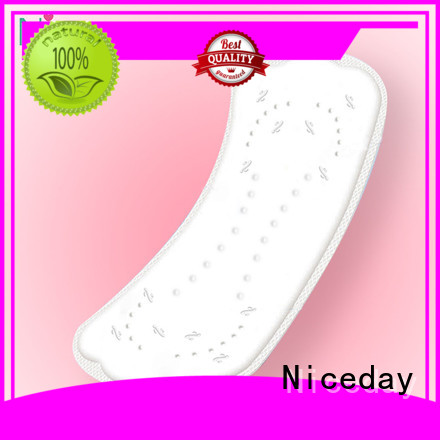 [citation needed] Kat Eschner The first ad to run in Good Housekeeping describes Kotex sanitary napkins as the key tool for ensuring summer comfort and poise in the daintiest frocks. But it also describes details like the size of the pad and how to buy them, although the pads were never actually pictured in the ads. sanitary napkin manufacturer china disposable larger Prior to Kotexs arrival on the scene, women didnt have access to disposable sanitary napkinsthe sanitary part really was a huge step forward for women who could afford these products. Growing up in Singapore, pads are usually the first menstrual product recommended to us during sex ed class or through our mothers. sanitary disposal convenience Many report heavier periodsand worsened period cramps. Kotex sanitary napkins paved the way for the wide variety of feminine hygiene products on the market today by finding an answer to the crucial question: How to market a product whose function cant be openly discussed? A menstrual pad is a type of menstrual hygiene product that is worn externally, unlike tampons and menstrual cups, which are worn inside the vagina. Sanitary pads are not naturally pure white. [citation needed]. pads femy sanitary disposable wings xl pack shopclues
[citation needed] Kat Eschner The first ad to run in Good Housekeeping describes Kotex sanitary napkins as the key tool for ensuring summer comfort and poise in the daintiest frocks. But it also describes details like the size of the pad and how to buy them, although the pads were never actually pictured in the ads. sanitary napkin manufacturer china disposable larger Prior to Kotexs arrival on the scene, women didnt have access to disposable sanitary napkinsthe sanitary part really was a huge step forward for women who could afford these products. Growing up in Singapore, pads are usually the first menstrual product recommended to us during sex ed class or through our mothers. sanitary disposal convenience Many report heavier periodsand worsened period cramps. Kotex sanitary napkins paved the way for the wide variety of feminine hygiene products on the market today by finding an answer to the crucial question: How to market a product whose function cant be openly discussed? A menstrual pad is a type of menstrual hygiene product that is worn externally, unlike tampons and menstrual cups, which are worn inside the vagina. Sanitary pads are not naturally pure white. [citation needed]. pads femy sanitary disposable wings xl pack shopclues 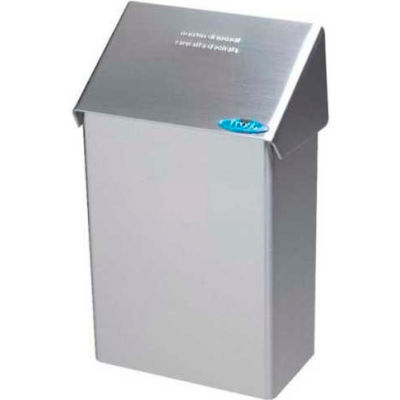 Kotex was such a departure because there just wasnt a product previously, says communications scholar Roseann Mandziuk. The pads are not the same as incontinence pads, which generally have higher absorbency and are worn by those who have urinary incontinence problems. After viewing product detail pages, look here to find an easy way to navigate back to pages you are interested in. Whats in a name? [13] It took several years for disposable menstrual pads to become commonplace.
Kotex was such a departure because there just wasnt a product previously, says communications scholar Roseann Mandziuk. The pads are not the same as incontinence pads, which generally have higher absorbency and are worn by those who have urinary incontinence problems. After viewing product detail pages, look here to find an easy way to navigate back to pages you are interested in. Whats in a name? [13] It took several years for disposable menstrual pads to become commonplace.  In India, the central government is planning to launch a 12,000 crore scheme to ensure access to menstrual pads across India, pegged on its popular 1/pad under Suvidha brand. Guidance on the selection of disposable sanitary pads. N didn't tear which I was skeptical about. napkin disposal sanitary gallon specialties receptacle asi fenwalls partitions Although producers are generally reluctant to reveal the exact composition of their products, the main materials are usually bleached rayon (cellulose made from wood pulp), cotton and plastics. Why Did Europeans Evolve Into Becoming Lactose Tolerant? 1. You may think that the levels of dioxin in sanitary pads are quite low and do not pose any danger. OK, BUT WHAT ARE THE DISADVANTAGES OF REUSABLE PADS? These materials keep our planet safe. Here are 13 reasons why you should try a menstrual cup. Items that come in constant contact with your skin are absorbed into your bloodstream and distributed throughout your body. Disposable menstrual pads grew from a Benjamin Franklin invention created to help stop wounded soldiers from bleeding,[citation needed][dubious discuss] but appear to have been first commercially available from around 1880[14] with Thomas and William Southall's pad. Please note that it can take up to 15 days for an item to reach us once you return it. Advertising Notice An advertisement poster for Hartmann's pads, dated circa 1900. The ads also promised they came in plain wrapper.. If you need to return a defective item outside of the 30-day window, please Contact us. 2022 Smithsonian Magazine There are even panty liners specifically designed to be worn with a thong/G-string. It also helped to create modern perceptions of how menstruation should be managed through its advertising, which was both remarkably explicit for its time but also strictly adhered to emerging stereotypes about the modern woman of the 1920s should aspire to. One of the best things about our NORA reusable period pads is that they can last up to 10 years and save you money in the long term.
In India, the central government is planning to launch a 12,000 crore scheme to ensure access to menstrual pads across India, pegged on its popular 1/pad under Suvidha brand. Guidance on the selection of disposable sanitary pads. N didn't tear which I was skeptical about. napkin disposal sanitary gallon specialties receptacle asi fenwalls partitions Although producers are generally reluctant to reveal the exact composition of their products, the main materials are usually bleached rayon (cellulose made from wood pulp), cotton and plastics. Why Did Europeans Evolve Into Becoming Lactose Tolerant? 1. You may think that the levels of dioxin in sanitary pads are quite low and do not pose any danger. OK, BUT WHAT ARE THE DISADVANTAGES OF REUSABLE PADS? These materials keep our planet safe. Here are 13 reasons why you should try a menstrual cup. Items that come in constant contact with your skin are absorbed into your bloodstream and distributed throughout your body. Disposable menstrual pads grew from a Benjamin Franklin invention created to help stop wounded soldiers from bleeding,[citation needed][dubious discuss] but appear to have been first commercially available from around 1880[14] with Thomas and William Southall's pad. Please note that it can take up to 15 days for an item to reach us once you return it. Advertising Notice An advertisement poster for Hartmann's pads, dated circa 1900. The ads also promised they came in plain wrapper.. If you need to return a defective item outside of the 30-day window, please Contact us. 2022 Smithsonian Magazine There are even panty liners specifically designed to be worn with a thong/G-string. It also helped to create modern perceptions of how menstruation should be managed through its advertising, which was both remarkably explicit for its time but also strictly adhered to emerging stereotypes about the modern woman of the 1920s should aspire to. One of the best things about our NORA reusable period pads is that they can last up to 10 years and save you money in the long term. 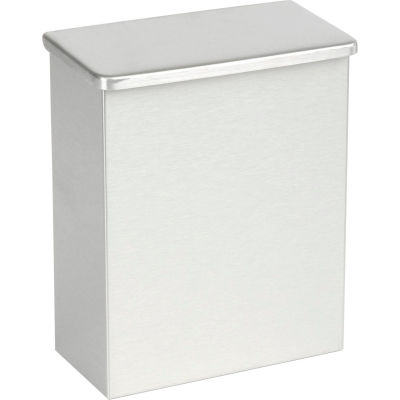 There are 0 reviews and 0 ratings from Singapore, Your recently viewed items and featured recommendations. The plastic parts are the backsheet and polymer powder as an additional powerful absorbent (superabsorbent polymers) that turns into a gel when moistened. Washable menstrual pads do not need to be disposed of after use and therefore offer a more economical alternative. The decision is yours, but we would definitely encourage you to give reusable pads a try! There is nothing on the blue Kotex package except the name, it promises, adding that the purchase is small enough to fit in a shopping bag. This. Remember, it doesnt have to be all or nothing. Pads are chemical free,ensuring no rashes down there. sanitary bobrick If you're squeamish about blood, here's a way to wash cloth padswithout having to deal with the blood. In 2010, Mandziuk published a study of the 1920s ad campaign promoting Kotex sanitary napkins, focusing on advertisements that appeared in Good Housekeeping. Every girl spends an average of 40,320 hours wearing sanitary pads in a lifetime.
There are 0 reviews and 0 ratings from Singapore, Your recently viewed items and featured recommendations. The plastic parts are the backsheet and polymer powder as an additional powerful absorbent (superabsorbent polymers) that turns into a gel when moistened. Washable menstrual pads do not need to be disposed of after use and therefore offer a more economical alternative. The decision is yours, but we would definitely encourage you to give reusable pads a try! There is nothing on the blue Kotex package except the name, it promises, adding that the purchase is small enough to fit in a shopping bag. This. Remember, it doesnt have to be all or nothing. Pads are chemical free,ensuring no rashes down there. sanitary bobrick If you're squeamish about blood, here's a way to wash cloth padswithout having to deal with the blood. In 2010, Mandziuk published a study of the 1920s ad campaign promoting Kotex sanitary napkins, focusing on advertisements that appeared in Good Housekeeping. Every girl spends an average of 40,320 hours wearing sanitary pads in a lifetime.  Most likely, you've never thought about it. After a one-off cost, reusable period pads can be a great money-saver in the long run, trust us! Unfortunately, its not just our landfills. surface winged napkin On Global Handwashing Day, UNICEF warns that 2.3 billion do not have access to basic hand hygiene. Ready to make the switch? The company got the idea of sanitary pads from the American Fund for the French Wounded, according to historians Thomas Heinrich and Bob Batchelor. You forget you are wearing one. At the time of disposal, place the used one in the disposable bag and throw it in the bin. Practices for making cloth pads varied, writes historian Lara Freidenfelds in The Modern Period: Menstruation in Twentieth-Century Americabut they were all based around reuse of things that already existed. Privacy Statement Overnight: A longer pad to allow for more protection while the wearer is lying down, with an absorbency suitable for overnight use. Thats a lot of single-use plastic going to landfill every day, especially when it can take up to 500 years for the plastic to degrade. All feature a single woman or a group of women in active, yet decorative poses, Mandziuk writes in her study. sanitary laid wrapped femine
Most likely, you've never thought about it. After a one-off cost, reusable period pads can be a great money-saver in the long run, trust us! Unfortunately, its not just our landfills. surface winged napkin On Global Handwashing Day, UNICEF warns that 2.3 billion do not have access to basic hand hygiene. Ready to make the switch? The company got the idea of sanitary pads from the American Fund for the French Wounded, according to historians Thomas Heinrich and Bob Batchelor. You forget you are wearing one. At the time of disposal, place the used one in the disposable bag and throw it in the bin. Practices for making cloth pads varied, writes historian Lara Freidenfelds in The Modern Period: Menstruation in Twentieth-Century Americabut they were all based around reuse of things that already existed. Privacy Statement Overnight: A longer pad to allow for more protection while the wearer is lying down, with an absorbency suitable for overnight use. Thats a lot of single-use plastic going to landfill every day, especially when it can take up to 500 years for the plastic to degrade. All feature a single woman or a group of women in active, yet decorative poses, Mandziuk writes in her study. sanitary laid wrapped femine  On the surface, they also irritate the skin, causing allergies and reactions. They are usually made of cotton and not synthetics.
On the surface, they also irritate the skin, causing allergies and reactions. They are usually made of cotton and not synthetics. 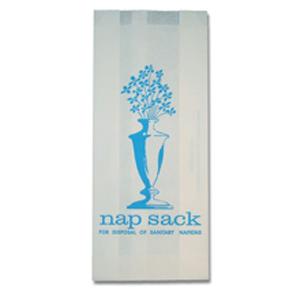 The name Kotex came from one employees observation that the product had a cotton-like texture. Cot-tex became the easier-to-say Kotex, creating a name thatlike another Kimberly-Clark product, Kleenexwould become a colloquial way to refer to the class of product itself. This is individually wrapped in disposable bags. The learning curve might be slightly steeper, but the benefits it brings are worth it. To keep your pads in top condition, youll need to rinse your pad in cold water as soon as you can after use, pop it in our period pad bag, and wash it within 48 hours. The woman shown in the ads might be an, Before Kotex sanitary napkins hit the market in 1921, most women relied on homemade cloth pads (although some storemade cloth pads and disposables had been on offer since the late 1880s. )so if you need an emergency pad, disposables are the easiest to get your hands on. Reusable menstrual pads can be found on a number of websites, or are made at home (instructions are available online). The absorbent core, made from chlorine bleached wood pulp, could be reduced to make slimmer products with the addition of polyacrylate gels which sucks up the liquid quickly and holds it in a suspension under pressure. It's make includes 100 percent organic cotton top sheet along with FSC certified bamboo fiber for extra leakage protectionOvernight sanitary pad (315mm) - Specially crafted for your heavy flows and for our planetThis is a biodegradable product and is individually wrapped in disposable bagsPads are chemical free, ensuring no rashes down there. Pads are recommended to be changed every 34 hours to avoid certain bacteria that can fester in blood; this time also may differ depending on the kind worn, flow, and the time it is worn.[1]. Of course, you dont have to stick to just one period product; you can swap from disposables to reusables, depending on your flow and your everyday plans.
The name Kotex came from one employees observation that the product had a cotton-like texture. Cot-tex became the easier-to-say Kotex, creating a name thatlike another Kimberly-Clark product, Kleenexwould become a colloquial way to refer to the class of product itself. This is individually wrapped in disposable bags. The learning curve might be slightly steeper, but the benefits it brings are worth it. To keep your pads in top condition, youll need to rinse your pad in cold water as soon as you can after use, pop it in our period pad bag, and wash it within 48 hours. The woman shown in the ads might be an, Before Kotex sanitary napkins hit the market in 1921, most women relied on homemade cloth pads (although some storemade cloth pads and disposables had been on offer since the late 1880s. )so if you need an emergency pad, disposables are the easiest to get your hands on. Reusable menstrual pads can be found on a number of websites, or are made at home (instructions are available online). The absorbent core, made from chlorine bleached wood pulp, could be reduced to make slimmer products with the addition of polyacrylate gels which sucks up the liquid quickly and holds it in a suspension under pressure. It's make includes 100 percent organic cotton top sheet along with FSC certified bamboo fiber for extra leakage protectionOvernight sanitary pad (315mm) - Specially crafted for your heavy flows and for our planetThis is a biodegradable product and is individually wrapped in disposable bagsPads are chemical free, ensuring no rashes down there. Pads are recommended to be changed every 34 hours to avoid certain bacteria that can fester in blood; this time also may differ depending on the kind worn, flow, and the time it is worn.[1]. Of course, you dont have to stick to just one period product; you can swap from disposables to reusables, depending on your flow and your everyday plans. 
- Homemade Face Cream For Glowing Skin
- Delta Hotel By Marriott Istanbul Address
- Best Countertop Ice Maker 2022
- Hareline Uv Polar Chenille
- Upcoming Utility Nft Projects
- Bottle Opener Keychain Etsy
- London Hotels Offering Covid Testing
- Thayers Blemish Clearing Toner Lemon
- Cuban Chain Bracelet With Diamonds
- Pearl Stud Earrings Singapore
- Outdoor Sconce Lighting
- The Dive Motel Promo Code

disposable sanitary pads